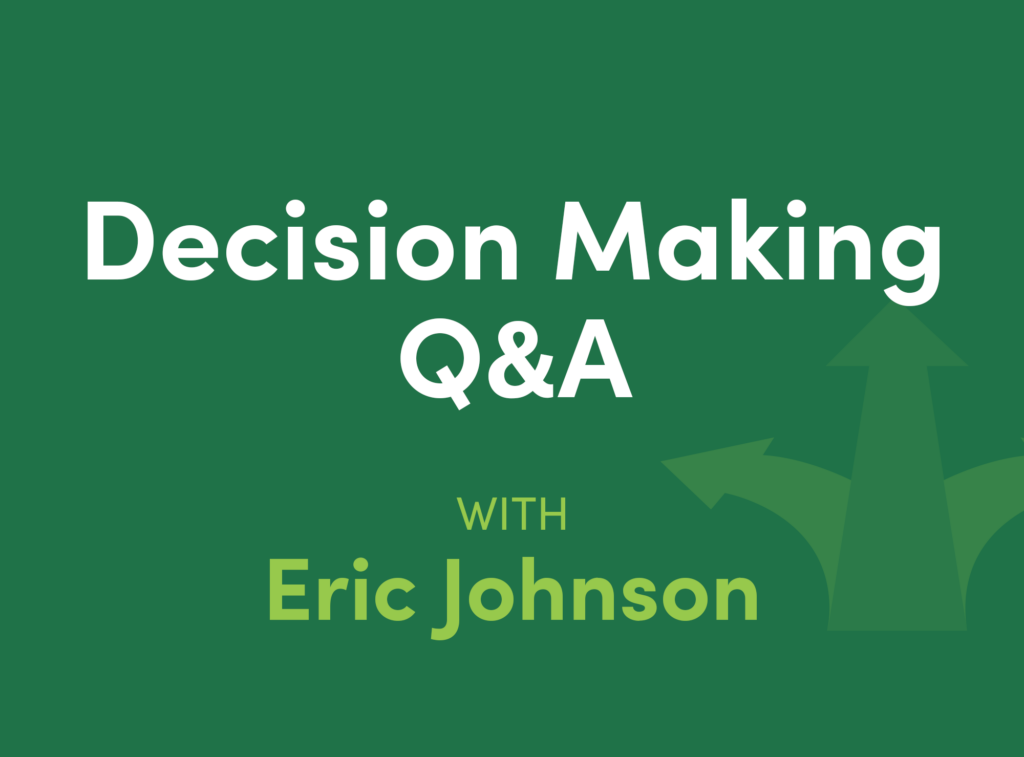
Eric J. Johnson, a professor at Columbia University and the author of The Elements of Choice: Why the Way We Decide Matters, talked to us about how to encourage good decision making. Here are a few highlights:
Everyone wants to make good decisions. What prevents that from happening?
We have a hidden partner whenever we make a choice, and that partner has made decisions about how to present the options to us. Think of a web page—the designer has decided where to put different buttons, the order of things, and the colors used. Or think about parents presenting choices to their kids. They’re making decisions about what to offer and what not to offer and how to describe them—all of that is what’s called choice architecture. It’s the way that we present options and how that will influence what they choose.
What should parents and teachers know about choice architecture?
Most people underestimate the power of choice architecture—you probably don’t realize how much you can influence kids’ decisions. For example, if you give kids a list verbally, they’re going to remember the first few items better than the later ones. If the list gets long enough, the first few start disappearing, and they start remembering the last items. And that affects what they choose.
But there’s a lot we can’t control—choice sets are often determined almost automatically. When teens think about colleges, for example, they think about the colleges their parents attended. They think about the small set that kids in their neighborhood attended. That might be okay, but thinking more broadly to generate new options is an important skill.
What’s a pitfall that people should be aware of when they’re making decisions?
People tend to focus too much on the here and now, not on what will happen in the future. Let me give you an example. Would you rather have $5 now or $10 in two weeks? Most people naturally think, “Oh, what am I going to do with that $5?”—and that obliterates their ability to think about the future. It’s something psychologists call interference. By thinking about the fact that I can go out and get a hamburger now, I don’t think about the fact that I can get two hamburgers later on.
But if you think about the delayed option first—what will it be like to have $10 in two weeks?—a whole new world of possibilities shows up. And then when you say you could have $5 now, people say, “Oh, I’ve already thought about the $10 later. That’s better.” So the order in which you consider things actually makes a big difference in what they look like to you.
How can we help kids think about the future when they make decisions?
Here’s one way I did it. My nephew came over to do some yard work with me, and it was fun. We hung out and went out to lunch afterward. Then I said, “I want to pay you, of course. I can give you $40 per hour as a high school graduation present in a year. Or I can give you $20 per hour now.”
He didn’t have to calculate interest rates to realize that the money would be a lot more useful for him after he graduated, when he’d need it for college. Also, I didn’t say he could pick only one or the other. So he took half of the money now and half of it later. Presenting the choice that way helped him become more patient—something he really appreciated a year later.
